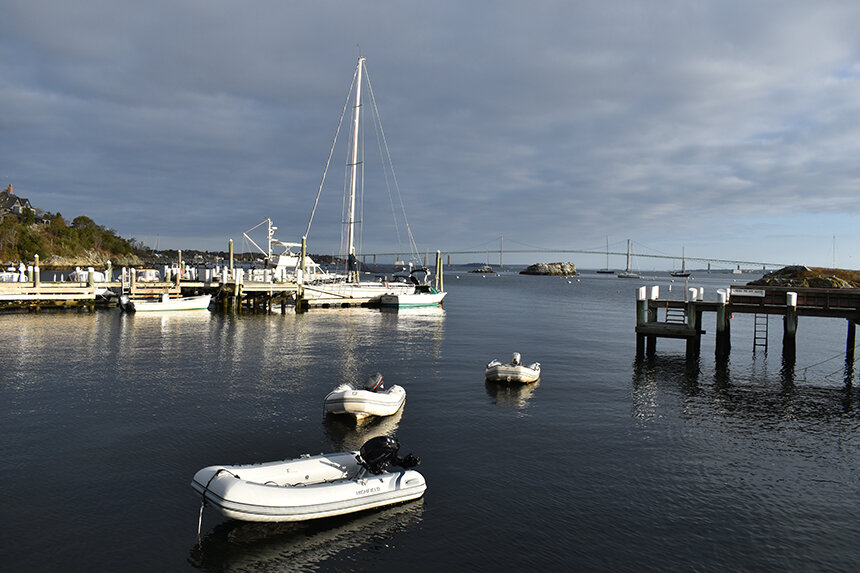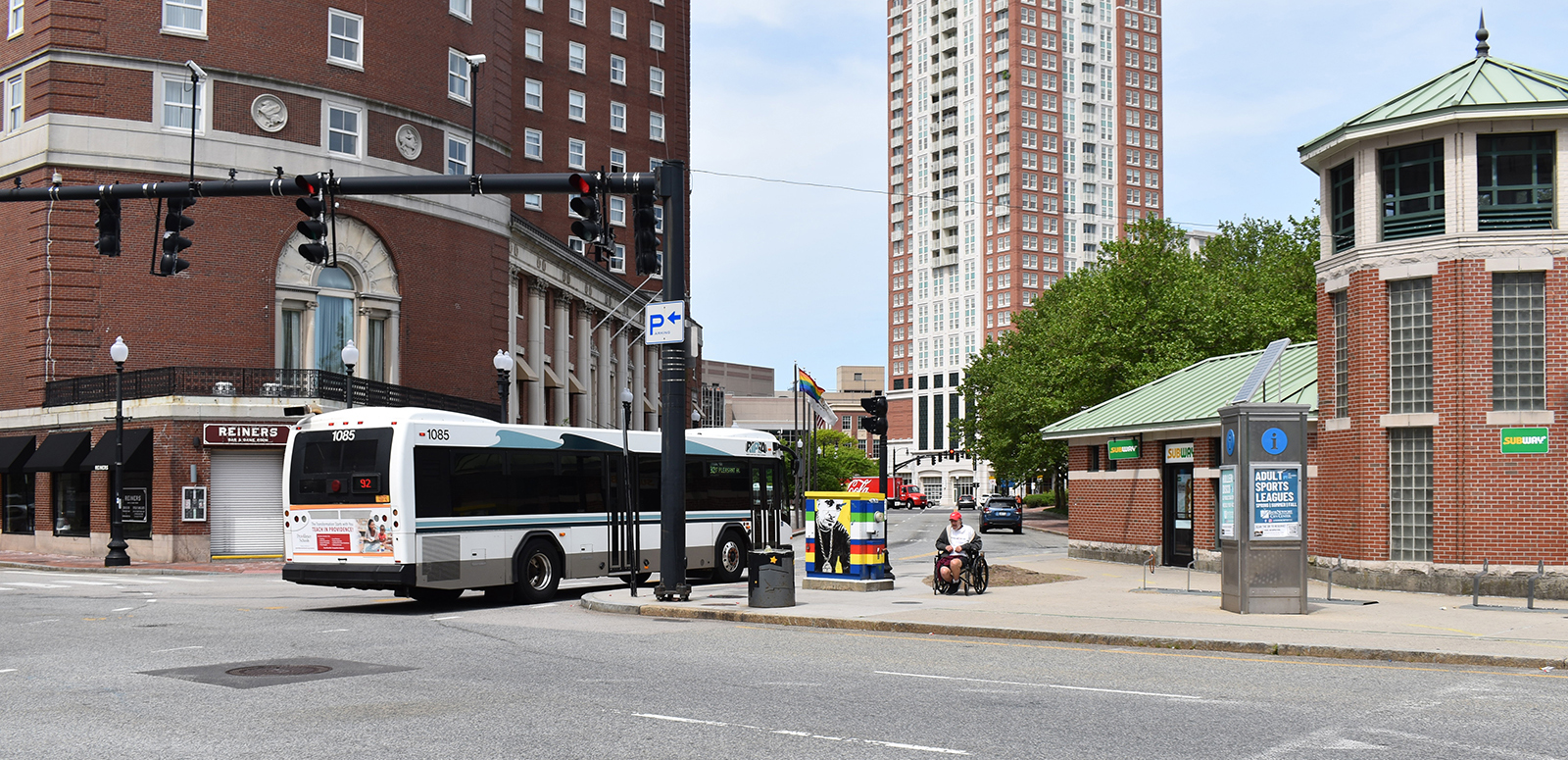Rhode Island Builders Calculate Ways to Increase Development
May 9, 2016
PROVIDENCE — The Rhode Island Builders Association (RIBA) has made it clear that it doesn’t want to build in wetlands or in the protective buffers that surround them. But the business group that represents the home building industry is intent on having those unbuildable zones around streams and ponds included in the calculation that determines how many houses or apartments can be built on a piece of land.
It seems like a simple enough proposition. But opponents of a Senate bill that would create a statewide allowance for wetland buffers in density calculations worry that a new law undermines protective zoning rules in cities and towns that want to protect open space and slow development.
RIBA’s argument, however, is that it’s the prerogative of the land owner — who is often a real-estate developer — to get the most number of homes or apartments on a piece of land.
Leonard Bradley Jr., a vice president at DiPrete Engineering in Crantson, said many owners of open space are land rich and cash poor, meaning they have land but are hindered by wetland rules that reduce the number of buildable units on a lot, units that a potential developer can build and make money on.
During an April 27 Senate hearing Bradley gave examples of three lots where the wetlands buffer reduced the number of buildable homes and apartments. In one example, a 67-acre site in Warwick had plans for 513 apartments dropped to 396 because of a 100-foot buffer around two ponds and a freshwater swamp.
“Having that taken out of the potential density becomes a burden for the land owner,” Bradley said.
Robert Baldwin, a third-generation real-estate developer and co-chairman of RIBA’s legislative committee, said increasing density will bring down high real-estate prices. Allowing more construction, he said, creates middle-income housing and slows the brain drain of college graduates leaving Rhode Island for cheaper housing markets.
“It’s an issue of affordability. (Recent graduates) don’t want to leave (Rhode Island),” Baldwin said.
Baldwin cited a 2014 piece by New York Times columnist Paul Krugman that calls for more affordable housing in dense, high-wage metropolitan areas. Baldwin noted that Krugman said young people are moving to the Sun Belt, where new, affordable single-family homes are being built and the cost of an acre of land is about a fifth of what it is in places like Rhode Island.
Providence has one of the worst college graduate retention rates — about 32 percent of city graduates stay to work, according to a recent report. College graduates, however, still seem to be flocking to expensive real-estate cities such as Boston, New York and San Francisco. The recent report suggests that it’s not the cost of housing that’s causing college graduates to leave Rhode Island but rather a lack of jobs.
The Senate legislation is the latest in a decades-long tug of war between environmentalists and advocacy groups such as Save The Bay and developers. In 1971, Rhode Island became the second state to pass statewide wetland standards. The Rhode Island Freshwater Act established wetlands buffers of 50 feet around a marsh, swamp, bog, pond, stream, flood plain and storm outflow. A 200-foot area was established for a river wider than 10 feet. A 100-feet zone was created around rivers less than 10-feet wide.
The act was revised after Rhode Island Department of Environmental Management-led reports in 1995 and 2007. A report released in December 2014 noted that a failure to strengthen wetlands regulations prompted many communities to enact their own. Today, 25 cities and towns have wetland standards that are stricter than state regulations. According to RIBA, about half of Rhode Island’s municipalities exclude wetland buffers in determining buildable density.
Last year marked a breakthrough in the tug of war, with the passage of new statewide standards for wetland buffers. The guidelines were also expanded to include vernal pools. The legislation was praised by both environmentalists and developers. The final numbers, however, are still being crunched by DEM. In a separate bill, the state agency is seeking a six-month extension for setting new buffer regulations.
Environmentalists are therefore miffed that builders want to institute new wetland standards before the forthcoming statewide ones are even in place.
“I think it’s important after all that work that nothing in this bill impacts what was passed last year,” said Topher Hamblett, Save The Bay’s director of advocacy and policy.
Meg Kerr, director of policy for the Audubon Society of Rhode Island, noted that increasing building density near wetlands could harm wetland buffers and pollute waterways.
The Rhode Island League of Cities and Towns also questioned the legislation. Other opponents say an increase in density would disrupt groundwater recharge areas and increase wetland flooding, as the change would allow for more runoff from imperious surfaces such as parking lots.
Sen. Stephen Archambault, D-Smithfield, said the idea of increasing density would create a public perception that skyscrapers will be popping up across the state.
“Maybe some towns don’t want that,” he said.
Sen. Susan Sosnowski, D-Kingston, said rural-focused towns such as South Kingstown may simply increase their density regulations in order to nullify a new density law. She also raised the issue of taxes. Property taxes, she said, may increase if land that is currently left out of a density calculation is suddenly included in it.
“Let’s face it, it’s going to increase the value of the property,” Sosnowski said.
She seemed to doubt RIBA’s claim that increasing density would lower home prices.
“I understand where you are going with this, but I don’t think it’s going to make housing any more affordable,” she told Baldwin.
The bill was held of further study. A companion House bill has also had a hearing and remains in committee.




"Greed Is Good" was Gordon Gekko’s theory for wall street. It seem that is the theory behind RIBA wanting to include wetlands in buildable property for calculating number of lots on the parcel. It only means more houses on smaller pieces, closer together. Then all the impacts: Septic in unsewered areas, new sewage/water lines in other areas. Impacts on these vital ecosystems. It seems the believe them useless but in reality they are the basis of healthy environments and food chains. The plan of build it and they will buy is only good for the builders not the state or everyone else’s needs. Next will they be lookibng to clear the wetlands because there too many mosquitos for their new homes??
The six-month extension for setting new buffer regulations has passed. Does anyone know where DEM is with those?